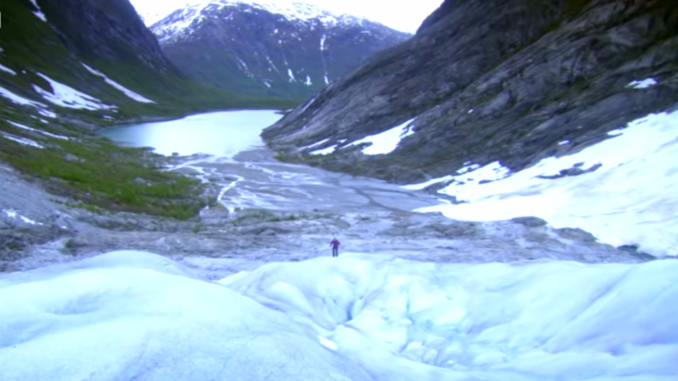
Life is amazing. These are very cool, and not just because they’re found high in the mountains atop rivers of ice.
Jón Pétur Eyþórsson (1895 – 1968), an Icelandic researcher and meteorologist first described balls of moss living on a glacier in a 1950 edition of Journal of Glaciology. He named them jökla-mýs, which is Icelandic for “glacier mice“. [Note: it’s hard to find freely available images of glacier mice: you may want to click on the links to see what they look like.]
Glacier mice aren’t found on just any old glacier. The exact conditions glacier moss require isn’t known, but the presence of volcanic ash may be one criteria. They’ve been found on glaciers in Alaska, Iceland, South America, and Svalbard (a group of islands in the Arctic, north of Scandinavia).
Not much is known about them, as they haven’t been studied extensively. Glacier mice start small, wherever a moss spore can find a bit of dirt or a pebble to cling to, scientists hypothesize. The moss covers the core dirt or pebble entirely, on every side, and grows from there, to the size of a ball of moss you can hold in your hand and even larger.
There are two astounding facts that are known about glacier mice. First, they move around on their own at any average speed of 2.5 centimeters (1 inch) per day in order that every side of the ball has a chance to get sunlight. Second, they travel in groups, changing direction and speed in unison like a herd of animals, or a flock of birds, or a school of fish. No one knows how or why they do these astonishing feats. Oh, and a third astounding fact: they live on ice, in freezing temperatures.
These things must actually roll around or else that moss on the bottom would die.
Sophie Gilbert, wildlife biologist, University of Idaho
Tim Bartholomaus, a glaciologist from the University of Idaho, and his colleagues have studied glacier mice in Alaska and published their findings in Rolling stones gather moss: movement and longevity of moss balls on an Alaskan glacier, published on May 14, 2020. The team marked each moss ball in a herd of 30 glacier mice with an unique identification tag consisting of beads of various colors on a length of wire looped through the moss ball. In 2009, they studied the herd for 54 days, tracking the location of each individual ball. Follow up visits took place in 2010, 2011 and 2012, which proved that the moss balls lived at least several years, and “potentially much, much longer”.
The glacier mice were observed perched on ‘ice pedestals’ that, theoretically, were formed when sunlight melted away the ice around motionless glacier mice. When the moss balls started to move again they did not just fall off their perches in random directions, but generally moved together in the same direction. The team took measurements and found that the moss was not simply rolling down a slope, or blown by the wind. They couldn’t attribute travel direction to sunlight, either.
Surprisingly, the dominant moss ball movement direction does not align with the prevailing wind or downslope directions, nor with the dominant direction of solar radiation.
Scott Hotaling, et al.
Microscopic life such as algae and bacteria is common on glaciers, but macroscopic life is not, which makes these balls of moss all the more unusual and complex. More than one species of moss may be part of a single ball. When glacier mice are cut open, one finds an entire ecosystem of other creatures, which may include such things as simple worms and tardigrades (water bears).
Life is amazing. Living things constantly find a niche where we think they cannot survive, and prove us wrong. This morning I had never heard of glacier mice, and now I know that each one is its own little world with its own ecosystem, and each little world moves in an apparent coordinated unison with other little worlds, as though they somehow sense or take a cue from each other, like a flock of birds or a school of fish.
“Life, uh, finds a way” — Dr. Ian Malcolm, a character in Jurassic Park (1993) played by Jeff Goldblum.
Question of the night: Have you been to a glacier, or is it on your bucket list?
